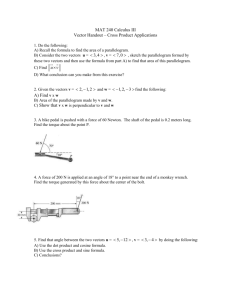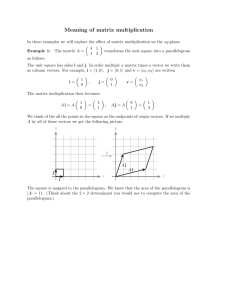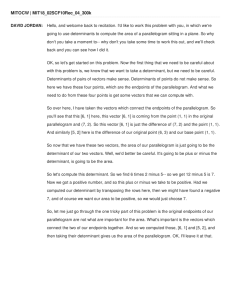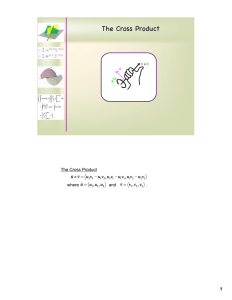Fall 2011 MATH 2250-004: Extra Credit Name: Robbie Snellman
advertisement
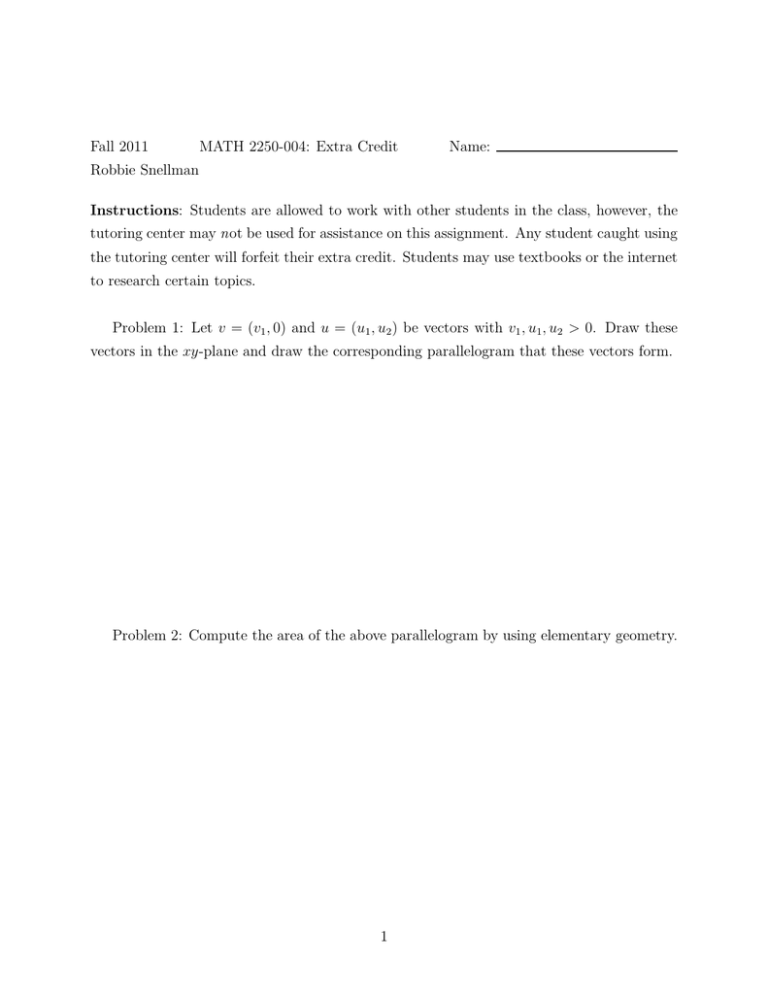
Fall 2011 MATH 2250-004: Extra Credit Name: Robbie Snellman Instructions: Students are allowed to work with other students in the class, however, the tutoring center may not be used for assistance on this assignment. Any student caught using the tutoring center will forfeit their extra credit. Students may use textbooks or the internet to research certain topics. Problem 1: Let v = (v1 , 0) and u = (u1 , u2 ) be vectors with v1 , u1, u2 > 0. Draw these vectors in the xy-plane and draw the corresponding parallelogram that these vectors form. Problem 2: Compute the area of the above parallelogram by using elementary geometry. 1 Problem 3: Realize the area in problem 2 as the absolute value of a certain determinant. Problem 4: Determine the matrix that rotates the vectors u, v counterclockwise by an angle of θ. For simplicity, you may assume that 0 < θ < π2 . Essentially, you are looking for a matrix A such that Av and Au are the coordinates of the vectors which have been rotated. (Hint: Draw a picture and use trigonometric identities). 2 Problem 5: Let ṽ = (v˜1 , v˜2 ) be the rotation of the vector v through the angle θ, and let ũ = (u˜1 , u˜2) be the rotation of the vector u through the angle θ. Write the components v˜1 , v˜2 , u˜1 , and u˜2 in terms of the components v1 , v2 , u1, and u2 , respectively. Problem 6: Compute the determinant of the matrix 3 u˜1 v˜1 u˜2 v˜2 ! Problem 7: Take the absolute value of the determinant found in problem 6. Convince yourself that rotating an object in the plane does not change its area. Based on this observation, what can we conclude about the area of the rotated parallelogram? Is there a relationship with the area of the original (“unrotated”) parallelogram? 4
